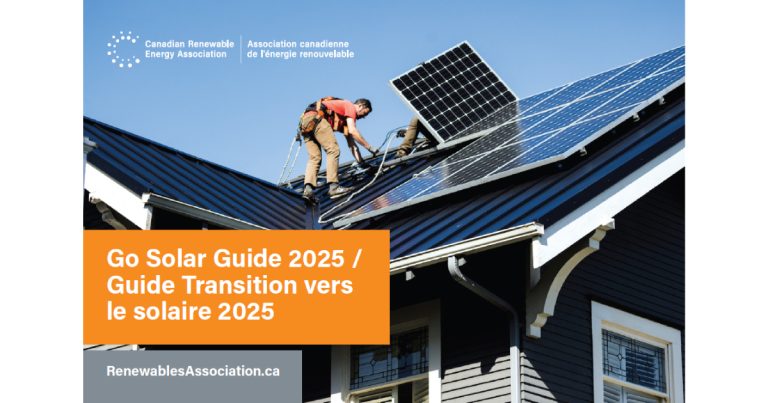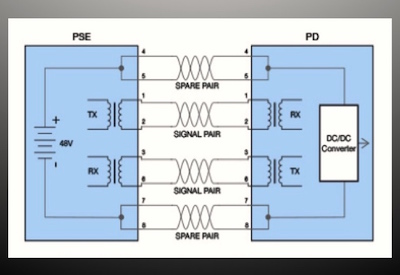The 10 Most Important Changes in the 2018 NFPA 70e Standard, Part 1

Apr 30, 2018
By James R. White
With the recent release of the 2018 edition of the NFPA 70E standard, many users are finding it challenging to interpret what it says and prioritize where they should focus their attention. The short answer is that the entire 70E standard is important, not just one chapter, article or section. However, this article highlights 10 changes that the author believes are most important. Here in Part 1: changes 1-5.
- New Table 130.5(C), Estimate of the Likelihood of Occurrence of an Arc Flash Incident for ac and dc Systems
This table replaces Table 130.7(C)(15)(A)(a), Arc Flash Hazard Identification for Alternating Current (ac) and Direct Current (dc) Systems in the 2015 70E standard (see figure 1a). In addition to the title and location change, the new Table 130.5(C) in the 2018 standard changed the third column heading from “Arc Flash PPE Required” to “Likelihood of Occurrence”. Section 130.5(C) of the 2018 standard also states that “Table 130.5(C) shall be permitted to be used to estimate the likelihood of occurrence of an arc flash event to determine if additional protective measures are required.” Use of arc flash-rated clothing and PPE is one of the additional protective measures listed (see Figure 1b).

Figure 1a
Table 130.7(C)(15)(A)(a) (Partial) NFPA 70E 2015 Edition
Figure 1b
Table 130.5(C) (Partial) NFPA 70E 2018 Edition
Why the change?
The 70E standard is written for field electrical workers, not for engineers or attorneys, although they may use it. Over the last several cycles, the 70E committee has tried to improve the usability of the standard, especially the arc flash PPE tables, to make it much easier for field electrical workers to use. By moving Table 130.5(C) into the body of the standard it can be used as part of an arc flash risk assessment for both the Table Method and when arc flash warning labels are used.
Bottom line
The new table is useful, but it cannot take the place of experience or expertise. This table should be used cautiously. The person in front of the equipment about to perform a task must determine its suitability and assess the equipment’s condition, including its condition of maintenance, before performing that task. Use of this table is “permitted”, meaning it’s an option — it can be used, but is not mandatory. At the end of Table 130.5(C) it states that to use the table, equipment must be in normal operating condition:
“Equipment condition considered to be ‘normal’ if all of the following circumstances apply:
- The equipment is properly installed in accordance with the manufacturer’s recommendations and applicable industry codes and standards.
- The equipment is properly maintained in accordance with the manufacturer’s recommendations and applicable industry codes and standards.
- The equipment is used in accordance with instructions included in the listing and labeling and in accordance with manufacturer’s instructions.
- Equipment doors are closed and secured.
- Equipment covers are in place and secured.
- There is no evidence of impending failure such as arcing, overheating, loose or bound equipment parts, visible damage, or deterioration.”
Be sure also to read and understand the note (*) at the end of the table that states, in part:
“The estimate of the likelihood of occurrence contained in this table does not cover every possible condition or situation, nor does it address severity of injury or damage to health. Where this table identifies “No” as an estimate of likelihood of occurrence, it means that an arc flash incident is not likely to occur. Where this table identifies “Yes” as an estimate of likelihood of occurrence, it means that additional protective measures are required to be selected and implemented according to the hierarchy of risk control identified in 110.1(H).”
Be aware that “Not likely to occur” does not mean it won’t happen. It just means there is a reduced risk of occurrence. Use your best judgement, in addition to this table, when assessing risk.
- DC voltage shock threshold changed back to 50V
This threshold was changed back to 50V from 100V to comply with OSHA regulations.
Why the change?
In the 2015 70E review cycle, the shock threshold for dc volts was changed to 100 Vdc (see Figure 2a) after a majority the 70E committee was convinced to do so by a very convincing dissertation from a well-respected speaker.

Figure 2a
Table 130.4(D)(b) (Partial) NFPA 70E 2015 Edition
Although technically, the speaker was correct, OSHA didn’t agree with him. So during the 2018 review cycle OSHA distributed a letter of interpretation to the committee, dated September 4, 2015, stating that OSHA would cite any employer who did not observe its 50 Vac or Vdc threshold. The letter included examples where workers had been killed by voltages under 50 V. Based on the input from OSHA, the committee reversed its stance on the shock threshold and went back to the 50 Vdc value (see Figure 2b).

Figure 2b
Table 130.4(D)(b) (Partial) NFPA 2018 Edition
Bottom line
The shock threshold for ac and dc voltages is once again 50 V to comply with OSHA regulations. This is based on a section of the Foreword in the 70Estandard that states, “The committee would develop a standard for electrical installations that would be compatible with the OSHA requirements for employee safety…”
- New Table 130.5(G), Selection of Arc-Rated Clothing and Other PPE When the Incident Energy Analysis Method Is Used
In the 2018 70E standard, Table 130.5(G) replaces Table H.3(b) from the 2015 standard. The new table provides guidance on how to select PPE when using the incident energy analysis method and was moved to the body of the standard.
Why the change?
In previous editions of the 70E standard, Table H.3(b) (see Figure 3a) was located in Informative Annex H. Workers commented that there was no method for selecting all the PPE required when using the incident energy analysis method, because Table H.3(b) was in Annex H and anything in the annexes is not considered part of the standard. As a result, Table H.3(b) was not being used as intended. In the 2018 70E the table was modified to eliminate any clothing or PPE under 1.2 cal/cm2, because it only deals with arc-rated clothing and other PPE. The table was renamed Table 130.5(G) and put into the body of the standard. Its use is “permitted”, meaning it’s an option — it can be used, but is not mandatory.
Figure 3a
Table H.3(b) (Partial) NFPA 70E 2015 Edition

Figure 3b
Table 130.5(G) (Partial) NFPA 70E 2018 Edition
Bottom line
If arc-rated clothing and PPE are to be selected using arc flash warning labels, Table 130.5(G) can be used to assist in choosing arc-rated and other PPE. Users are cautioned not to mix the Table Method with the incident energy analysis method for selecting their arc-rated clothing and PPE. The two methods are not compatible and could cause issues. The Table Method is used when estimating the available fault current and operating time of the overcurrent protective device (OCPD). Table 130.5(G) is used when the equipment has arc flash warning labels on it.
- 70E Committee sets minimum CPR and First Aid training intervals.
The 2018 70E edition now states in 110.2(C)(2)(d), “Training shall occur at a frequency that satisfies the requirements of the certifying body.” Thus the 70E committee sets minimum requirements for CPR and First Aid training, not best safe work practices.
Why the change?
In previous editions of the 70E, CPR, First Aid, and AED training were required annually. This may have been more frequent than the requirements set by various organizations (such as the American Heart Association (AHA), for the general public, but electrical workers face a much greater risk from ventricular fibrillation due to shock than the general public.
During the 2018 70E review cycle the issue came up that the 70E does not set best safe work practices; it sets minimum requirements. Companies are to meet or exceed the requirements in the 70E.
Bottom line
The idea of the 70E standard setting minimum standards vs. best safe work practices has been the subject of several discussions among committee members in the past. In general, the committee has voted to establish that the 70E standard indeed sets minimum requirements, not best safe work practice. As part of that approach, the standard states that the training interval requirement follows that of the certifying body. For example, if the American Heart Association’s interval for recertification is two years, that is the new requirement from the 70E. However, as a practical matter workers are probably not going to remember how to perform CPR or first aid under the stresses of an emergency situation, knowing that someone’s life could hang in the balance, after more than a year. So the author strongly recommends annual training for CPR, first aid, and/or AED use (if an AED is available at the work site.)
- Forget the 40 cal/cm2 incident energy threshold
Incident energy is not a good measure of the pressure wave that might be created by an arc event. The committee did not want workers to think that an arc event under 40 cal/cm2 was not serious.
Why the change?
In previous editions, the 70E contained an informational note in 130.7(A) that stated, “When incident energy exceeds 40 cal/cm2 at the working distance, greater emphasis may be necessary with respect to de-energizing when exposed to electrical hazards.” This was the “line in the sand” companies and workers used to determine what was safe and what could not be worked on. However, that is not what the Informational note said. It stated only that extra efforts should be made to de-energize equipment, not that it could not be worked on. In general, most people would say that equipment rated above 40 cal/cm2 is off limits. I’m good with that.
The problem with that informational note is that it was created during the 2000 review cycle. Our understanding of arc flash and arc blast has changed considerably since then. There are situations when incident energy below 40 cal/cm2 might be more hazardous than when it is above that level. For example, a fault that releases 40 cal/cm2 over 30 cycles will create less arc pressure than one that releases its energy in two cycles, all things being equal. We now know that pressure wave (arc blast) is related to the fault current, not incident energy, because it is an instantaneous event.
Bottom line
There is no such thing as a “safe” arcing fault. Incident energy is not a good measure of the pressure wave that might be created by an arc. Equipment rated above 40 cal/cm2 should be de-energized before being worked on. But equipment rated below that level should be because an arc event under 40 cal/cm2 can be serious as well.
Author’s note
This 2-part article only touches on some of the revisions to the 2018 edition of NFPA 70E. Many recurring or global changes are not covered here. The NFPA 70E committee reviews the actions it has taken in the past, then tries to improve what is written to make the 70E as clear and usable for the field service technician as possible. It is up to the user to interpret the 70E and apply it in the workplace. The author suggests that each user visit the NFPA 70E page and review the actions and committee statements for each action. These provide even more insight into why the committee took a specific action and the intent of that action.
James R. White is Vice President of Training Services, Shermco Industries for Fluke Corp.
Watch for Part 2 in an upcoming issue of EIN.
Image source: Graphic Products
















